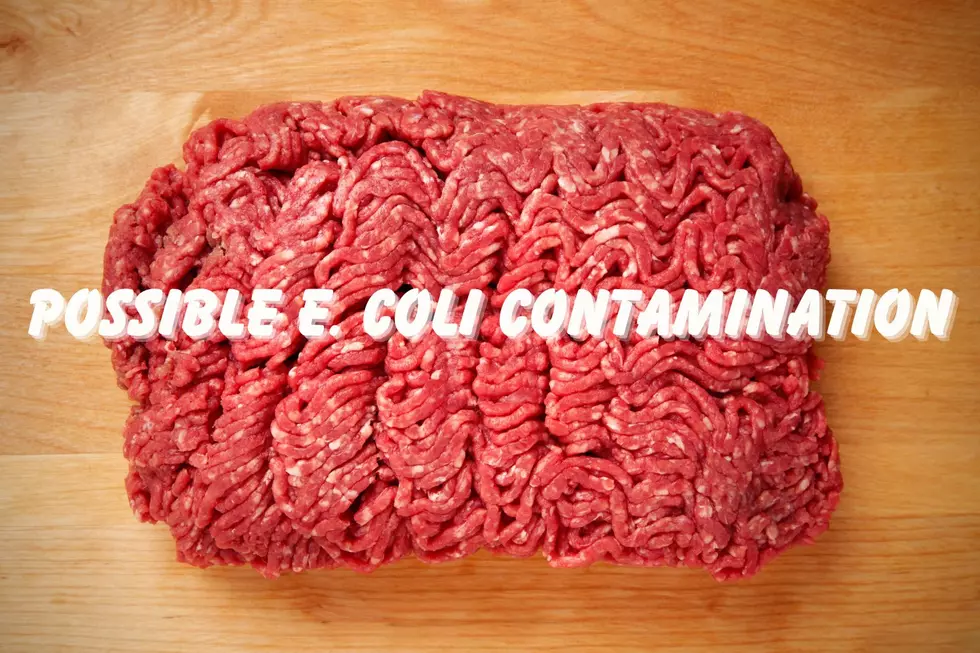
Health Alert: The Ground Beef In Your Freezer May be Contaminated with E. Coli
The United States Department of Agricultures' Food Safety and Inspection Service (FSIS) has issued a Public Health Alert for ground beef products that were shipped to retail locations and food service institutions across the country, including IN, KY, & TN. They say the ground beef products may be contaminated with E. Coli O157:H7.
Raw Ground Beef Products May Be Contaminated with E. Coli O157:H7
The raw ground beef products were made on March 28, 2024, and are marked with "032824" to denote their production date. They are marked with a "Freeze by" date of April 22, 2024. Inside the USDA inspection mark, these products will have establishment number of "EST. 960A."
What Exactly Is E. Coli?
E. Coli is the commonly abbreviated name for the group of Escherichia coli bacterias. It is often found in our environments, in our digestive tract, as well as in the digestive tract of animals, and it is also commonly found in food. There are several different kinds of E. Coli bacteria and most of them are harmless to humans. However, there are that some, like E. Coli O157:H7 that produce a powerful toxin, known as Shiga according to the Center for Disease Control and Prevention.

Symptoms of Shiga Toxin-Producing E. coli
The Centers for Disease Control and Prevention say that a Shiga Toxin-producing E. Coli (STEC) infection can start to cause symptoms within three to four days of ingesting something contaminated by the bacteria but they do say that illnesses can start as early as one day, or as late as ten days after exposure. The CDC says symptoms include:
Symptoms of Shiga toxin-producing <em>E. coli </em>(STEC) infection vary for each person, but often include severe stomach cramps, diarrhea (often bloody), and vomiting. Some people may have a fever, which usually is not very high (less than 101˚F/38.5˚C). Most people get better within 5 to 7 days. Some infections are very mild, but others are severe or even life-threatening.
STEC Can Also Cause a Type of Kidney Failure Known as Hemolytic Uremic Syndrome
In addition to the symptoms above, the USDA points out that while most people impacted by this type of bacteria are able to recover in about a week, there are those who may develop something called hemolytic uremic syndrome or HUS. This is a type of kidney failure that can impact anyone but it most commonly occurs in children under the age of five years old, and older adults. HUS can cause decreased urine output, pallor, and easy bruising, and anyone experiencing these symptoms should seek immediate emergency medical care.
What To Do If You Think You Have This Product In Your Freezer
Consumers and food service institutions should check their refrigerators and freezers for this meat. The products should not be consumed or served. The USDA says they should be thrown away or returned to the place of purchase. The full product list can be seen below. To view the labels of the affected products click here.
Preventing Food Borne Illnesses
One of the best way to prevent food borne illnesses is to ensure proper handling and proper cooking. Ground beef should be cooked to an internal temperature of 160 degrees and that temperature should be checked using a meat thermometer. Learn more about safe internal cooking temperatures for your food here.
[Source: FSIS.USDA.gov; CDC]
LOOK: 20 American foods that raise eyebrows outside of the US
Gallery Credit: Charlotte Barnett

![Louie Smiles in Every Photo Because He’s a Hap-Hap-Happy Boy! [Warrick Humane Society Pet of the Week]](http://townsquare.media/site/74/files/2024/04/attachment-LOUIE-WHS.jpg?w=980&q=75)
